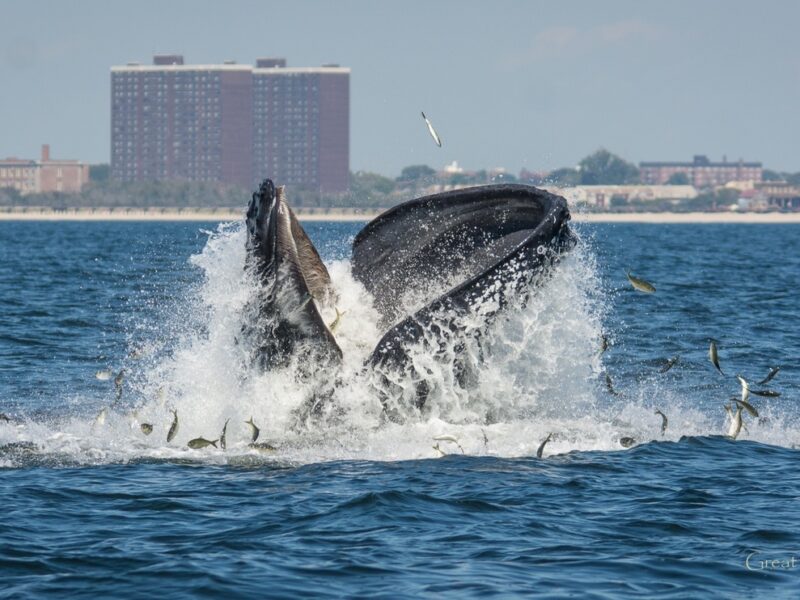

This year, even Santa Claus has been feeling the effects of climate change. As Santa’s headquarters start heating up, elves are losing their homes because of melting Arctic ice and reindeer are struggling to find food. Over the past 20 years, even the caribou populations have declined from five million to around 2.1 million. Light pollution is interfering with navigation and smog is making rooftop landings hazardous. At the rate we’re burning fossil fuel, the North Pole could be entirely ice free within decades. As Santa preps his sleigh for the worldwide, whirlwind Christmas gift tour, the less-than jolly fat man predicts that Christmas as we know it could end by 2050.
And that’s just the North Pole. Known as a “threat multiplier,” climate change is the issue that affects all other issues, touching everyone’s lives in one way or another. It affects hunger, homelessness, child poverty and the refugee crisis. It impacts people’s livelihoods and worsens social, racial and gender inequalities. It affects everyone, both rich and poor. In 2020, there were a record number of weather and climate disasters that cost the country $95 billion, according to NOAA.
Climate change has also become a security issue. As Erin Sikorsky of the Center for Climate and Security points out, “Climate driven instability in countries like Pakistan threaten U.S. security, whether by spiraling into conflict that requires deployment of U.S. troops, or giving extremists a foothold to exploit popular unrest and expand their power.”
If climate change is the root cause of so many of these issues, then the environmental charities fighting to stop it help support what all other charities are trying to alleviate. Donating to environmental organizations preemptively fights hunger, homelessness, disease, etc.
Working to stop climate change through philanthropies also means our money goes farther.
Organizations that are dedicated to slowing the climate crisis can do more, do it faster and more effectively than we as individuals ever could. Big change has to come from government and industry, but it’s private philanthropy that funds the scientific research used to persuade policy makers. Executive Director Ellen Dorsey of Divest-Invest Philanthropy points out, “Our collective financial resources can power the advocacy needed to move governments, corporations and financial institutions to act.”
One good example of the power of environmental charities is the Menhaden Management Project. While we as individuals may help the planet by eating local, sustainably raised fish, it’s this program that’s brought an abundance of marine life back to the East End. With our financial support, The Nature Conservancy and other advocacy groups were able to convince lawmakers that Menhaden (also known as “bunker”) support a host of marine life and need to be protected. This summer we saw the result: a rebound of whales, dolphins, osprey, eagles, and all the fish we love to eat. Carl Lobue, Oceans Program Director for The Nature Conservancy describes results of the program as almost miraculous.
“The other day, I saw seven humpback whales, blue fin tuna jumping six feet out of the water, and an epic striped bass run so dense they were bumping into our boat,” he said
Amid the glut of environmental organizations out there, the most efficient way to supercharge your impact is actually not by donating to an individual charity, but to a fund like the Giving Green Fund. This nonprofit pools together donor money and gives it out to the charities they deem most effective, right at the moment when funding is most needed.
As for specific charities, I recommend organizations that are especially focused on reducing carbon emissions (see sidebar). Their work isn’t glamorous. No polar bears and old growth forests here. Just NGOs focused on mitigation (tackling the root causes of climate change) rather than adaptation (reducing the results of climate change impact). Both are important, but I believe we should focus on preventing further catastrophe. These are also groups that aren’t already getting a big influx of cash from other sources, like the government or big philanthropies, and could really use money from smaller donors.
That said, there are over 3,000 environmentally focused charities, each of which has slightly different focus and creates change in its own way.
If you’re into gardening, support The Perfect Earth Project. If you think the Earth needs a good lawyer, give to Earth Justice. If you know that soil can save the world, donate to The Carbon Underground. If you want kids on Long Island to learn all about their environment, consider Seatuck.
You can even help stop reindeer exploitation by donating to the Born Free Foundation. They’re all part of an ecosystem of solutions that work together. You do what works for you.
Let’s talk about money. When considering how much to give, most people who wrestle with this thorny decision keep it simple by using some sort of formula. A common rule of thumb is to give 1 to 3 percent of one’s annual income. That way, as your income goes up, so do your charitable donations. Tithing in religious communities shoots a little bit higher, using 10 percent as a measurement. If you happen to be as rich as Father Christmas, the IRS allows taxpayers to deduct charitable contributions up to 50 percent. Some people donate the equivalent of their annual restaurant expenses. Others create a specific fund from which to donate.
No matter how you give, there are loads of clever ways to donate that help your bottom line and make your money go farther. By taking the money from investments that have appreciated over time, you can avoid capital gains tax. According to my financial advisor, this lets you potentially give more to the charity than if you’d donated cash, often increasing the amount by up to 20 percent.
Naming a charity as the beneficiary of your IRA, annuity, life insurance policy, or employer retirement plan helps you avoid both income tax and estate tax.
Consider prioritizing your donations based on your largest taxable event in 2023. If you received a bonus or sold a home, contributing a portion of your assets can help to reduce your taxable income.
You don’t have to be Michael Bloomberg to make a difference. For those of us who don’t have $32 billion laying around, most charities take as little as $5. At The Environmental Defense Fund, close to 80 percent of supporters give less than $100. These gifts add up. So do what you can. The more the better.
For the person who has everything, or is simply on the same page environmentally, consider giving to charity in lieu of, or in addition to, a traditional holiday gift.
A word about timing. The best time to give to an environmental cause was yesterday. But right now would also be an excellent time. If we don’t keep the global temperature down now, we’ve missed our chance.
In a perfect world, the future of philanthropy would follow this timeline: Donate to help stop this existential crisis today, so that someday we’ll be living in a world so imminently habitable and stabilized, that we can once again focus on all the other charities we’ve always loved and supported.
Recently, in an interview with the BBC, Santa Claus told reporters, “As a major donor to children’s stockings worldwide, I can vouch for the fact that it feels good to give. And since climate change, unlike myself, isn’t something you “believe in,” it’s time for everyone to get on The Nice List and help save Christmas!”
Green Charities You May Not Know:
Rewiring America (rewiringamerica.org): Electrification nonprofit, focused on electrifying homes and businesses, helping America save money on energy bills, tackle climate goals, improve air quality and health, and build up the clean energy workforce. In its first year, with about $2 million in funding, the organization got the nation’s first electrification bill introduced into Congress.
Evergreen Collaborative (evergreenaction.com): Uses advocacy to apply pressure on Congress, the executive branch, and federal agencies to take strong climate action. Includes prominent scientists and policymakers working for better climate policy and environmental justice.
Good Food Institute (gfi.org): Nonprofit think tank and international network of organizations working to make alternative proteins no longer “alternative.” Substitutes for beef reduce CO2 emissions, avoid contributing to the growing threat of antibiotic resistance, free up land and ocean ecosystems for biodiversity restoration, and ultimately feed more people worldwide.
Carbon180 (carbon180.org): Goes beyond preventing carbon emissions and actually works to reverse it by developing technologies that remove carbon from the atmosphere. Also advocates for carbon removal programs on Capitol Hill.
Industrious Labs (industriouslabs.org): Helps “heavy industry” go green. Steel and cement are needed to rebuild bridges and roads, construct wind and solar projects, and manufacture electric vehicles and heat pumps that will undergird a cleaner future, but conventional steel and cement, which accounts for one-third of greenhouse gas emissions, needs new alternatives.
 More Posts from Jenny Noble
More Posts from Jenny Noble